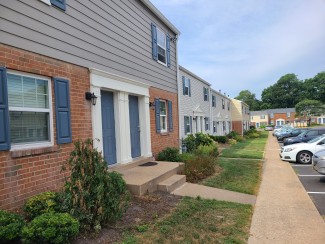Most residential energy efficiency programs do not adequately serve the households who could benefit most from energy upgrades. A new toolkit shares best practices for reaching all underserved customers as well as several specific groups.
Longstanding inequities have prevented some communities from benefiting from energy efficiency. Many communities of color and low- to moderate-income households live in inefficient, poor-quality housing that wastes substantial energy and poses numerous health hazards. Inadequate access to energy efficiency programs exacerbates high energy burdens and poor health outcomes for these households.
Read the ToolkitMany utilities, government bodies, and other organizations run programs to install energy-saving upgrades in homes, but not all households have equal access to these programs. A new ACEEE toolkit highlights strategies for designing energy efficiency programs that expand participation among underserved households.
Register for the toolkit release webinar, today at 1:00pm ET
ACEEE interviewed utility representatives to identify their utilities’ key underserved customer groups. In addition to strategies that can help programs reach all underserved households (shown in the table below), the toolkit provides specific insights for better serving low- and moderate-income households, renters and residents of multifamily housing, and rural communities. While there are many other groups that could be considered underserved, these were the groups that the interviewed utility representatives identified as priorities.
| Strategy | Feasibility | Impact |
| Pursue equitable community engagement | Medium | Very high |
| Establish a one-stop shop | Difficult | Very high |
| Create and disclose equity metrics | Medium | High |
| Develop a diverse and inclusive energy efficiency workforce | Difficult | High |
| Tailor marketing based on customers' preferences and behaviors | Easy | Moderate |
Strategies to better reach all underserved customers. The toolkit contains 11 additional strategies to reach specific subgroups (low- and moderate-income customers, renters and residents of multifamily housing, and rural communities).
Based on the interviews with utility representatives and discussions with ACEEE experts, the toolkit rates each strategy on feasibility (easy, medium, or difficult) and impact (moderate, high, or very high). The toolkit is set up so that program administrators can quickly and easily find strategies that will work for them. We explore 2 of the toolkit’s 16 total strategies here.
Assisting low- and moderate-income households with pre-weatherization repairs
Many weatherization projects cannot be completed if a home has physical issues such as old or faulty wiring, a broken roof, or mold. Often affecting the households that could benefit most from energy upgrades, these deferrals highlight the need for residential energy efficiency programs to address health- and safety-related repairs. Such necessary repairs are sometimes referred to as "pre-weatherization" measures, but it is uncommon for energy efficiency programs to support pre-weatherization work. Enrolling deferred homes in a housing rehabilitation program could help more income-eligible customers receive weatherization services. Program administrators can look to federal funding sources like the Inflation Reduction Act or initiatives like Residential Retrofits for Energy Equity (R2E2) for additional assistance in scaling these pre-weatherization programs.
Virginia provides a great example of how to help tackle needed repairs. Virginians who meet the income requirements for the U.S. Department of Energy’s Weatherization Assistance Program (WAP) can enroll in the state's Weatherization Deferral Repair Program to receive repairs for issues that have resulted in the home’s weatherization deferral. Common repairs include roof repair or replacement, plumbing repair, or mold remediation.
Developing a diverse and inclusive workforce to better reach underserved households
One of the most important strategies for scaling program participation is developing a diverse and inclusive energy efficiency workforce. Employing workers from underserved communities can not only improve financial stability and career opportunities for these individuals but also build trust with the communities as a whole.
The Rising Sun Center for Opportunity, a nonprofit serving California's Bay Area and San Joaquin County, shows how program administrators can improve efficiency in local homes while training residents for clean energy careers. Its Climate Careers program trains people aged 15 to 22 years old in implementing home upgrades that conserve energy and water. As of 2021, 76% of participants reported that Climate Careers positively impacted their future, and 96% reported increased skill development.
Energy efficiency and its benefits are frequently out of reach for households who already suffer from economic and social hardships. We hope to see program administrators incorporate strategies from the toolkit to increase participation in energy efficiency programs and thereby reduce more households’ energy burdens and improve their quality of life.



